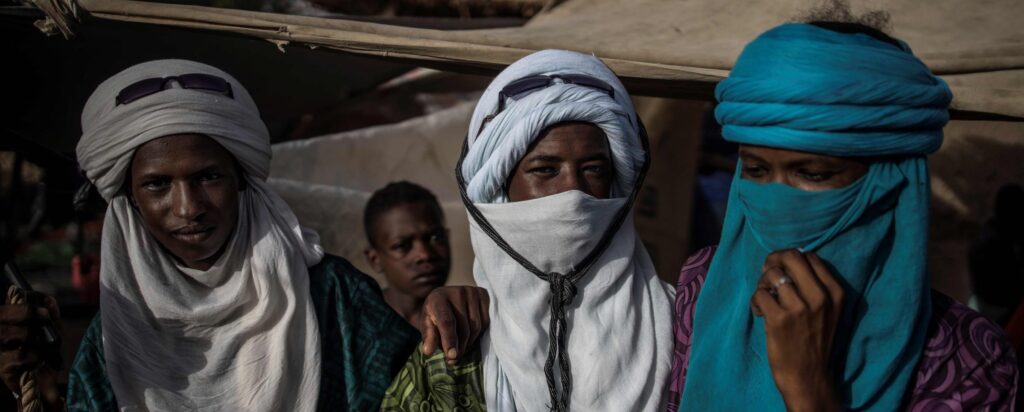News
Europe and “Wider Mediterranean”: the tale of migrations
by Anna Maria Cossiga / Photo credits: Inside Over
In the beginning, Europe was the centre of the world; or it thought it was. It still is in the planispheres. We can find them with the United States at the center, or China, but they are not as widespread globally. At the heart of Europe is the Mediterranean, a melting pot of cultures, trade and conflicts. Europe colonized much of the world, to the west, south and east – always in relation to the old continent. It caused damage, but also fostered lasting and fruitful encounters.
Thus, for better or for worse, the old continent has influenced the planet for centuries. But now it is being influenced by a conspicuous part of the world. The countries involved are those of the so-called “Wider Mediterranean”, a geopolitical region with fluid borders. It includes the Middle East and North Africa (MENA), as well as the entire Sahel belt and the Horn of Africa to the south, the countries bordering the Black Sea to the northeast, the Persian Gulf, through to Iran, Afghanistan and Pakistan. It is from many of these countries that the migratory flows which have been affecting Europe for decades originate, and while the old continent continues to manage these as an emergency, it has become clear that this is a structural issue. The causes which urge people to migrate are numerous and interrelated. Conflicts, political circumstances, violations of human rights, lack of work and future prospects, population growth, environmental problems, all contribute to determining in the countries of departure, difficult in if not tragic living conditions, which induce an increasing number of people to migrate in search of a better life.
The circumstances described above are in no way new. Yet, with every new arrival, and despite the numerous European and state laws regulating migration flows, Europe as a Union, and its individual states, are overcome by panic, be they initial ports of entry, (Italy, Greece, Cyprus, Spain, Malta), or in northern and eastern Europe, many of which have no intention of redistributing on their territory migrants arriving in other European countries (Austria, Hungary and Poland, among others).
It would perhaps be appropriate to keep the panic in check and take time to reflect. No one has any intention of denying that migration from countries of what we call the Wider Mediterranean actually exists, that it will not abate, and that, especially due to the explosive demographic growth of those countries, it is likely to increase. This will, of course, have repercussions on our societies. “Immigration anxiety”, however, could decrease if we consider the data for 2022 provided by the Flow Monitoring of the International Organization for Migration: the number of migrants to Europe has significantly decreased from 2016 to the present day – 389,976 people compared to the current 93,723. The peak of arrivals is almost always recorded concurrently with wars or political-social unrest, as for instance at the time of the Arab Spring or in the most tragic moments of the Syrian war. On these occasions, many of those arriving were people who would fall into the category of asylum seekers and subsequently refugees.
However, what mainly concerns governments is the issue of ‘irregular’ immigrants. There are a wide range of different categories which we use to attempt to classify migrants and in fact it is difficult to accurately define the boundaries. To give an example: those who might be granted refugee status are irregulars when they enter the host country, if not illegal. They will then have to go through a long process to be identified as asylum seekers and finally recognized as refugees. What about climate migrants? Is fleeing from a country where droughts have wiped out any possibility of food security or access to water, really that different from fleeing a country at war or where one is subject to persecution? Aren’t people’s lives still at risk? The same should apply to economic migrants, who, driven by their country of origin’s precarious economic conditions, are fleeing from poverty. Isn’t theirs also a request for asylum?
Rather than cry out against invasion, European countries should examine the situation more thoroughly and reconsider many of the existing laws, perhaps making both the terms for reception less complex, as well as those regulating the repatriation of non-entitled migrants less cumbersome and long; or by increasingly facilitating humanitarian corridors and reopening regular immigration channels. Immigration can also have positive effects, especially considering that Europe is a country suffering from drastic ageing.
However, as Giorgio Gomel, President of the Alliance for Middle East Peace Europe points out, we are well aware that the migration issue “conjures up an ethical-political dilemma, that is the contrast between an ethics of hospitality and an ethics of security”. Perhaps, the real solution to the problems concerning migration lies in being able to make the two ethics coexist, and fully acknowledging that, if well managed, exchanges between countries can also bring something positive.
The original article is available here: https://www.insideover.com/migration/europe-and-wider-mediterranean-the-tale-of-migrations.html

